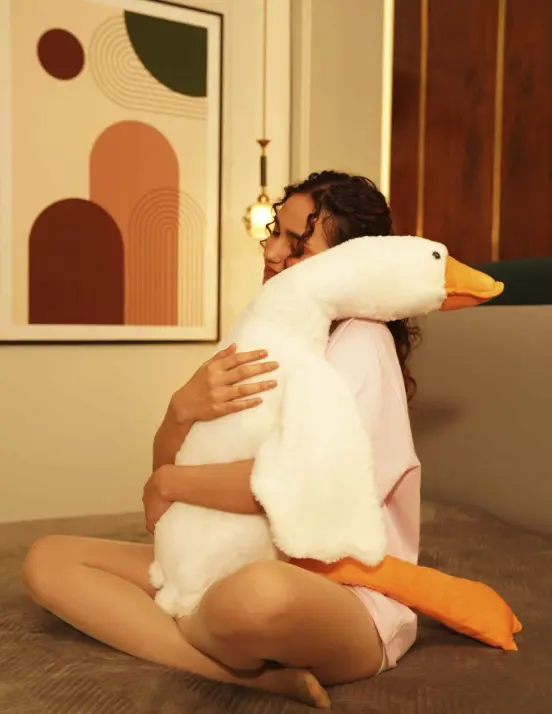How a Hug Pillow Can Change the Mood of Your Room
Some spaces look nice, but don’t feel like anything. That’s the difference. You walk in, and maybe it’s styled just right—neat layout, balanced colours, everything placed where it should be. But it doesn’t give off warmth. Nothing invites you to stay. It just… exists.
Then there are rooms with a nice hug pillow casually sitting in the corner. And suddenly, everything feels softer. Less posed. More like a place you want to be instead of one you’re supposed to admire.
The Role of a Hug Pillow (That Nobody Talks About)
There’s something about the shape. Or the squish. Hard to pin it down. But hug pillows don’t shout. They kind of sit there. Waiting.
Not in an obvious way, but you see one and almost instinctively want to lean into it. Hold it. Press your face against it after a long day.
It becomes part of the routine, even if you didn’t mean for it to.
Why Your Room Might Feel Off Without Realising It
Sometimes you tidy up, rearrange furniture, throw in a rug, hang up art—and still, something’s missing.
What’s missing might be softness. Not physical softness, necessarily, but emotional.
A hug pillow brings that in.
- It relaxes stiff corners.
- It gives neutral spaces a reason to feel lived-in.
- It makes quiet rooms feel less empty.
- It adds pause, without being dramatic.
People underestimate how much objects affect energy. A hug pillow balances that out. It’s not decor in the way a candle or frame is. It’s more personal. Something gets placed there… and stays, because it feels like it should.
It Shows Up Where You Least Expect It
On the edge of a chair that doesn’t get used much.
At the foot of the bed, looking like someone forgot it—on purpose.
Even on the floor, next to a stack of half-read magazines.
Wherever it ends up, it becomes part of how the room feels.
Living rooms get a little warmer.
In bedrooms, it feels like someone lives in them, not just sleeps.
Corners become pause-points, not just wasted space.
And all of this, from one soft, slightly slouchy shape.
Something About Texture Changes the Air
No need for fabric names. You can feel what matters. That gentle give when you press down. That weight that makes it stay put, but still feel like it wants to be held.
Even better when it contrasts what’s around it—wooden chairs, sleek sofas, plain bedding. That push and pull is called tactile layering. You might not call it that, but your senses do.
Rooms are better when they mix textures. A hug pillow bridges those gaps in a quiet, comforting way. It lets everything else feel less strict.
Gift One and See What Happens
You give someone a mug, and they say thanks.
You give someone a hug pillow, and sometimes they pause. Hold it. Smile. Not because it’s fancy—but because it feels right.
That reaction says more than wrapping ever could.
Especially for people who don’t usually buy these things for themselves. It feels thoughtful. Slightly unexpected. But somehow, precisely what they didn’t know they needed.
It’s one of those gifts that stays on the couch long after the thank-you message is sent.
Small, Personal Shifts
Let’s not pretend it changes everything. It doesn’t.
But maybe you sit differently when it’s near. Perhaps you reach for it during a slow evening. Or maybe it just sits there, part of the space, helping in a way words don’t quite capture.
That quiet comfort? That’s part of what designers sometimes refer to as emotional design. You don’t have to understand the term. You’ll feel what it means.
Even if nobody else gets it, you will.
The Pause You Didn’t Know You Needed
Sometimes, a hug pillow ends up becoming part of your day without asking permission. It’s not dramatic. It doesn’t demand a place. It just waits—until you find yourself sinking into it without thinking.
You might not even notice the shift at first. A bit of ease in your shoulders. A longer breath. The kind you didn’t realise you’d been holding.
On days when nothing else goes according to plan, it becomes the one thing that doesn’t need fixing. Just there. Still soft. Still yours.
That comfort, that quiet acceptance… it adds up.
The Feeling It Leaves Behind
No flashing lights. No dramatic impact. Just a better room.
More calm.
More quiet.
More human.
You start to notice that people stay longer when they visit. Or that you don’t need background noise to relax. That maybe, for the first time in a while, your space feels like it hugs you back.
And maybe all it took was a cushion shaped like something meant to be held.
If you start seeing your room differently—if it feels softer, if it slows you down in a good way—that’s not an accident. Something shifted. Something tiny, but noticeable.
That might be the hug pillow. Or not.
Hard to say.
But it’s there. And it helps.
ALSO READ-How Long Is 10 Inches? 15 Common Things That Are 10 Inches Long

